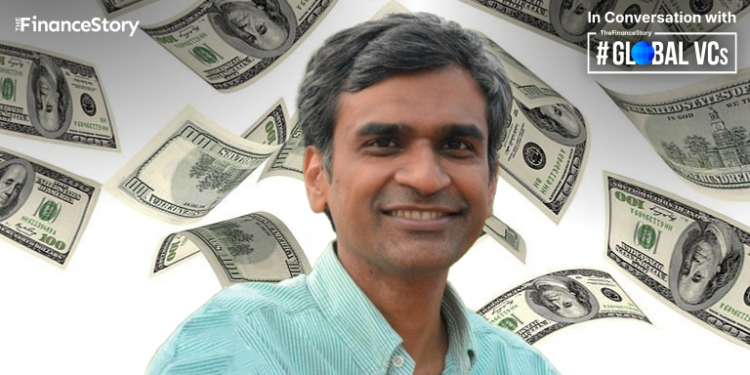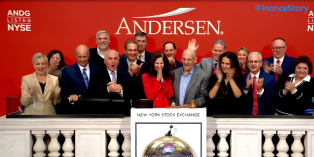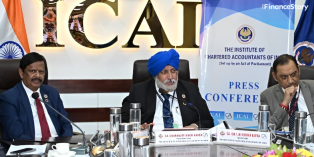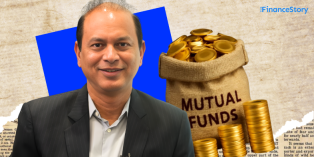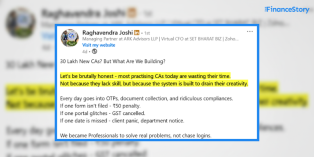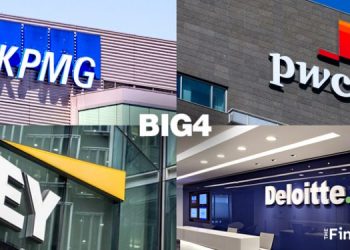- Many entrepreneurs have not seen any downsides in their valuation since 2015, but market correction is bound to happen.
- A good startup founder understands business and finance along with technology.
- Naganand Doraswamy, the founder of Ideaspring Capital, made some interesting transitions from a software engineer to an entrepreneur to a VC.
- Idea spring Capital is an early-stage VC fund that focuses on investing in B2B enterprise product innovation startups.
- Here are the excerpts from the interview:
The early days
My dad was an engineer in the public sector and my mom also used to work.
So growing up I saw both my parents working. And obviously, coming from a middle-class family, we had enough money to eat good food at home and study in government colleges.
Those days in the 70s and 80s, most people chose to be a Doctor or an Engineer. When it came to deciding on my further studies, engineering was my first choice.
I started with mechanical engineering and halfway through my first year moved to computer science.
Fast forward to 1987, after my engineering I started working and two years later I went to the US to do my Master’s at Virginia Tech.
I remember it was the first time I sat on a flight, I did not know how to put on the seat belt!
And there has been no turning back ever since.
The transition from a hardcore tech person to a business person
Let me give you some background.
In 1994, I along with four other engineers co-founded Span an IT Services and IT Consulting company. I stayed mostly on the consulting side, as I was in the US, doing a few other things.
In 2000, I joined PhotonEx, a US-based startup as its Founding Member. Since I joined them early on as a software architect, they promoted me to software director very soon. That was my first “managerial experience”
Unfortunately, that company closed down as it couldn’t survive the nuclear winter.
We tried our hands at building another start-up in the fixed-mobile convergence (FMC) space, but couldn’t get funding.
It was pretty disheartening, and that is one of the reasons I moved to India in 2005 and joined Span full-time.
But there was a silver lining as well. Throughout all those years I participated in architecture meetings and noticed how the business aspects took more importance in the execution of a strategy.
Then the realization set in; having knowledge of technology is good but if you really want to scale you have to be a tech-cum-business guy.
I think that was the moment when my transformation from a pure tech guy to a technology-cum-business guy happened.
At Span, I also got exposed to various roles, such as HR, operations, and IT.
It sort of reignited that sense of entrepreneurship in me.
In 2015, Span got acquired, a big success for us.
What next?
An early-stage VC Fund – Ideaspring Capital
Now coming to my transition from an entrepreneur to a fund manager, happened because of two fundamental reasons.
Firstly, after post Span acquisition in 2015, I still wanted to contribute significantly to the startup ecosystem. I knew the regular 9-5 job was not meant for me.
Then only two options existed; either build my own startup or work with startups in some way.
The former option seemed hard, given I had just hit 50 at that time. It would’ve taken me 5 more years of backbreaking grinding just to build a business from the ground up.
Secondly, after returning to India, I became part of the Indian startup networks namely, Indian Angel Network, and TiE Global. In those days a lot of GIC (Global Innovation Centers) were emerging in India, B2C model was also becoming popular.
I noticed that entrepreneurs came out of these GICs and focused on building products, not only for India but for the world.
My initial thought was “Why don’t we give the capital and help them with our experience as entrepreneurs?”
Our proposition was that India’s next phase after B2C would be B2B startups as with B2B, we would become a product nation. That is what got us going and we asked Mohandas Pai to join us.
He was the first one who committed himself to this venture and said “I think it makes sense. Let’s go do this.”
Obviously convincing people as a first-time fund manager was a pain. We had no clue how funds worked, and how the return of capital worked.
Secondly, we did not know the intricacies of building a startup so we only approached those who had the same passion as us.
Because of that even to this day, we do not consider ourselves fund managers, as our job is to identify early-stage big revenue product companies, give them money, and be available to help them succeed.
Invested a total of Rs 118 crores. Returns on the first fund. The next fund size is INR 250 Crores.
In terms of the metrics, we are committed to 25% IRR but most importantly, we had already given 40% total fund, thanks to Numocity Technology’s exit. That is a good metric to have for a first-time fund manager.
Overall from a financial perspective, we are doing reasonably well, but we still have a very long way to go.
There are a lot of ifs and buts in our industry, so I don’t want to seem too excited just yet, but 4 of our companies are earning more than $2.5 – $3 million in revenue. I know those guys will exit.
Another thing we have in our mind is that we should enable exits in India. Our thesis was that if a startup gets to $8 – $10 million, it will get $6-$8 million in multiple returns. In that case, two good things will happen.
One, we will give back to our helpers.
Two, we would start making money, hence stronger startups will come up. As a result, the early employees will be committed to the startup. So that way the virtuous loop of product innovation in India will kick in.
Our focus is to have these conversations with the founders early on. Because to be honest, when you fund a start-up you have no idea how far those companies will go.
But when a company gets to $8 to $10 million in revenue there will be a huge possibility that the company will become a 100 million dollar company.
An understanding of finance apart from having the knowledge of technology?
Absolutely! I think it is mandatory because a startup is all about 20% technology, and 80% business-related strategy.
Thus, if you don’t have a balanced team, with adequate experience in business and technology, it would be hard for us to invest.
You can build a great product but if you can’t sell it what’s the use of building a product?
Having said that, we did invest in the startup Karomi which was a single-founder company, but only because they understood the business and had built the business pretty well.
In all other companies, we’ve had at least two founders.
The market is slowing down
We knew it had gone out of control. Many entrepreneurs have not seen any downsides in their valuation since 2015. It has only gone upwards.
Let’s say a founder raises $15-20 million in series A then obviously in the seed round it had been $6-8 million fund and not less. Cause one round after the other, you would want to raise 3x or 4x of your previous amount, otherwise, it would not make sense.
We also knew market correction was coming.
There would be a significant market correction after the IPO, and as a result, it’ll put pressure on series, B, E, and D. Correction will happen at every stage but it will take time to come to the seed round.
In the seed round, the valuations will be sustainable.
These thought processes are slowly creeping in and I think it’s a good change that’s coming in the ecosystem.
But I also believe that in any economic situation, a good company and a good founder will always find people, motivated to support them, although they will be supported at a valuation that is reasonable.
Is fund available for global players as well?
Being an Indian fund, 75% of the capital is Indian, but we certainly have global investors. Moreover, we want to entertain one or two institutional investors as well.
The fund is at a decent size so it’s good to have that perspective.
The first reason why we want to open the door for global investors is that all our companies are looking to go global. And we have to be strategic about this.
When our companies raise the next round we need those connections, so that they could refer our startups to the right people.
Hence just taking only Indian capital and not outside capital is foolishness in my opinion.
And the next reason why we are leaning more toward India is that we want India to prosper and reach a $5-$10 trillion dollar economy.




